Hair is an integral part of fashion, and most of us have to deal with different hair issues throughout our life. Therefore, you need to know about hair to buy relevant products to avoid wasting money and damaging your hair in today’s world.
Here is our guide on anything and everything about the anatomy of hair. Let’s learn the basics every hair enthusiast should know about hair structure, hair condition, different hair types, hair growth cycle, thickness, density, different types of scalps, hair porosity and elasticity, etc.
Hair Structure
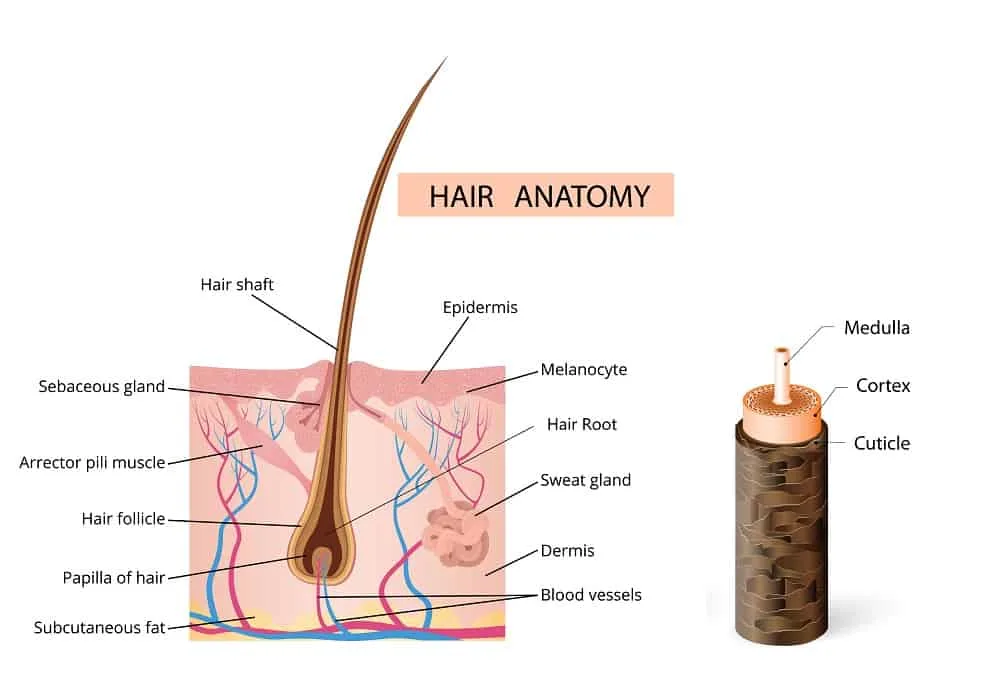
Hair is formed of three different structures: the cuticle, cortex, and medulla. The cuticle is the outermost and protective layer of hair, which is quite similar to a snakeskin or fish scale. This is often where the initial damage takes place. The cortex, in the middle, holds the color or melanin in the hair and is also prone to damage. Finally, the innermost part of the hair is the medulla.
Hair produces from follicles beneath the skin’s surface. Hair root lies inside the follicle, whereas the hair shaft is the part that protrudes from the scalp; thus, each hair shaft is a hair. The hair bulb is located at the base, which supplies blood, receives nutrients, and produces new cells along with baby hairs.
The sebaceous or oil gland is also part of the hair follicle and generates natural oils that moisturize, waterproof and protect both hair and skin. Finally, the Arrector Pili is a tiny little muscle attached to the follicle that regulates the hair and is found on every strand. We feel goosebumps because of the Arrector Pili.
Hair Growth Cycle

There are three stages in a hair growth cycle: Anagen, Catagen, and Telogen. The active growth phase is known as the Anagen phase, when hair grows about 1 centimeter or 0.5 inches a month on average. This will vary according to factors such as age, ethnicity, health, and medicine that influence the rate of hair growth.
Approximately 85 percent of the hair is in this phase at any given moment, and it can last anywhere from months to years. All of the hair is always at different stages of growth. If all of our hair was in one phase at the same time, we would be either bald or have hair for that time period.
The second stage is the Catagen, a transitional period that lasts around two weeks. During this phase, the hair does not grow. As a result, the follicle shrinks, causing the bulb to separate and begin the rest phase i.e., Telogen. It lasts 5 to 6 weeks and results in the formation of a new hair bulb.
As it grows, a new baby hair forms, pushing out the unshed ones that haven’t already fallen out. Roughly 10 to 15 percent of our hair is in this stage all the time.
How many hair growth cycles do an average person goes through in a lifetime?
The hair will never grow in a single cycle, only through successive ones. It is estimated that each person goes through 20 to 30 hair growth cycles in their lifetime. For that reason, it is expected that they grow thinner and weaker until death.
Besides that, the older we are, the less fiber we produce in the anagen phase, resulting in fewer strands being produced until it eventually stops, and we have to deal with baldness.
In healthy people, 90% of the hair is in the anagen (growth) phase and only 10% in the catagen (rest) or telogen (falling).
If there is a different balance between them, it’s important to visit your dermatologist to look for the real cause of your hair loss and why it is having trouble growing back.
Most of the time, It should be related to the factors mentioned in the article like – lousy eating habits, hormonal changes, lack of care, etc. So, stop being a doctor yourself and go to a dermatologist if needed.
Hair Types
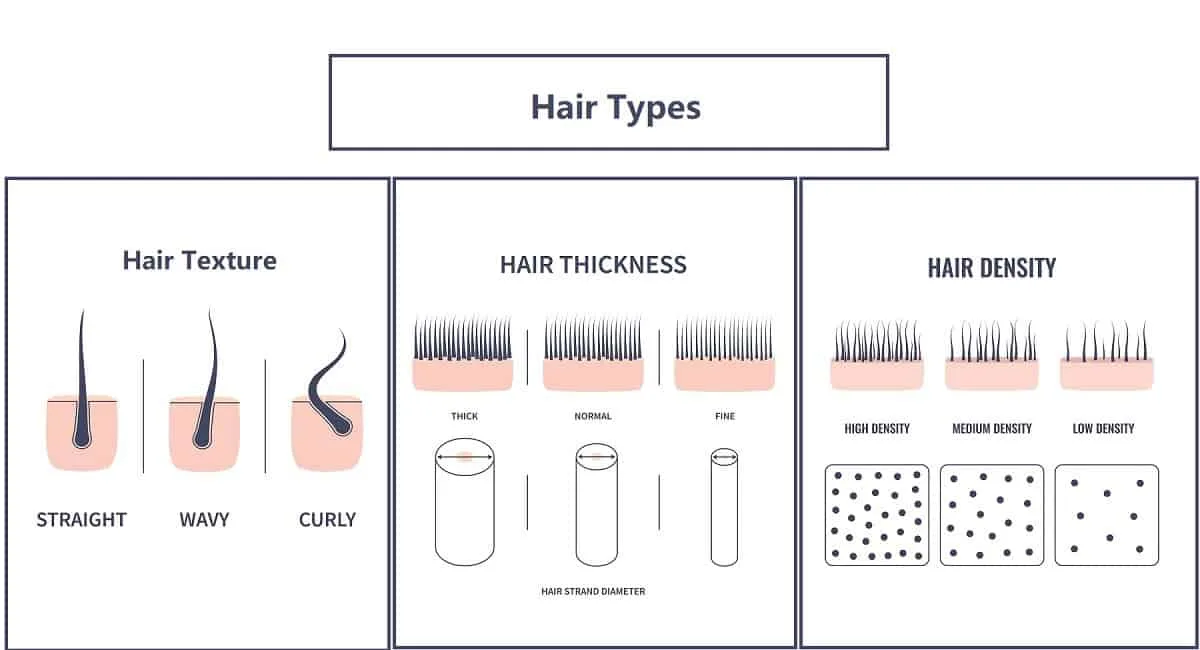
When it comes to hair type, there are three factors to consider: thickness, density, and texture.
Hair thickness, which is the width of each hair strand, means how thick or thin an individual hair shaft is.
Hair density is the quantity of hair or how much hair a person has on their scalp. Human hair can be low, medium, or highly dense.
Lastly, the texture of the hair is either curly, wavy, or straight. So your hair type could be normal density medium wavy hair, highly dense thick curls, fine straight hair, medium-thick straight hair, etc.
Hair Condition
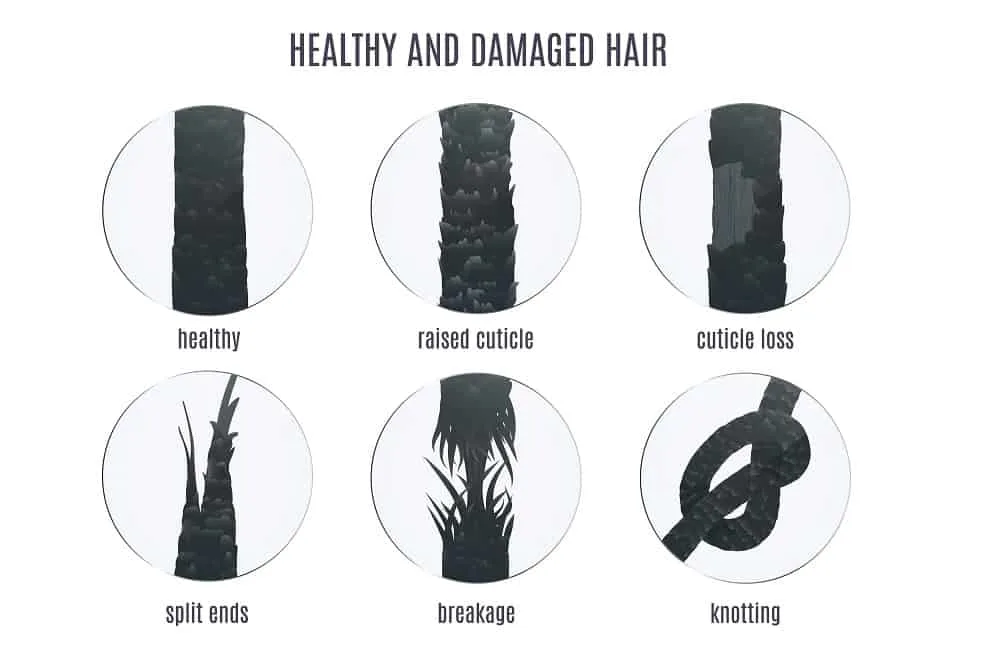
The current state of your hair is referred to as its condition at any given time. Hair condition (good or bad) could be the way your natural hair is, or it could result from different circumstances. When the hair cuticle stays closed and flat, it’s healthy, and the cortex is smooth, silky, and elastic. This indicates that the hair is in good condition.
Signs of good hair condition hair are:
- Flat Cuticles: with just the right amount of internal moisture, your hair shines and is easier to comb. Something isn’t right when it’s difficult to comb or gets tangled.
- Healthy Cortex: good moisture levels and healthy proteins make it robust and supple.
In bad hair conditions, the hair cuticles are damaged, rough, or the layers are raised, and the cortex is swollen or dried up or traumatized, resulting in split ends and making hair look dull and lifeless. Because of raised cuticles, the hair gets easily knotted or tangled. Damaged hair dries up fast and due to moisture retention, it can easily lose its shape.
Factors Affecting Hair Condition
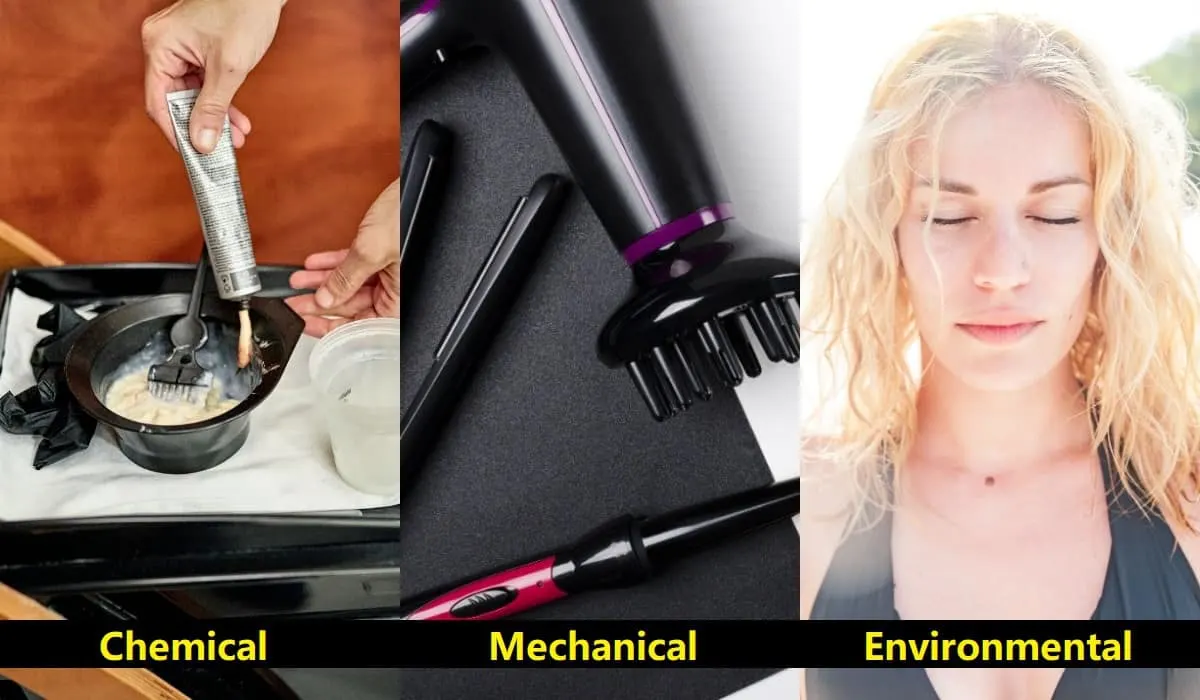
Chemical, mechanical, and environmental factors are responsible for influencing hair conditions. Whatever we do to change the color and shape of our hair or style is a chemical factor. Think hair dye, perm solution, hair spray, or mousse. Alcohol-based products dry out the hair, raise the cuticle layers, and swell up the cortex.
The mechanical factors are hot tools, hairdryer and brush or combs, etc. In addition, environmental elements like sun and wind, temperature, and humidity affect both skin and hair. For example, humidity can cause curly hair to form frizz.
Testing Hair Thickness
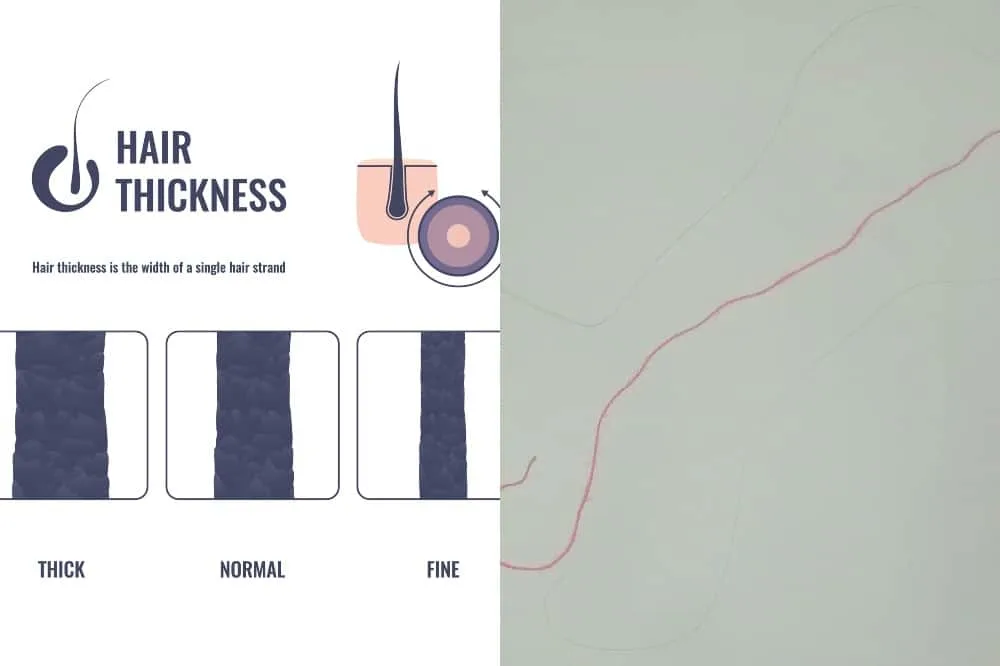
Measuring the thickness of hair can be done through a sewing thread test. Just put a piece of regular sewing thread and a strand of your hair side-by-side in a white paper or sheet.
- You have thick hair if your hair is as thick as the thread.
- If your hair is slightly less or much thinner than the thread, you have medium/normal and fine hair respectively.
Most people have medium-thick hair.
Density Test
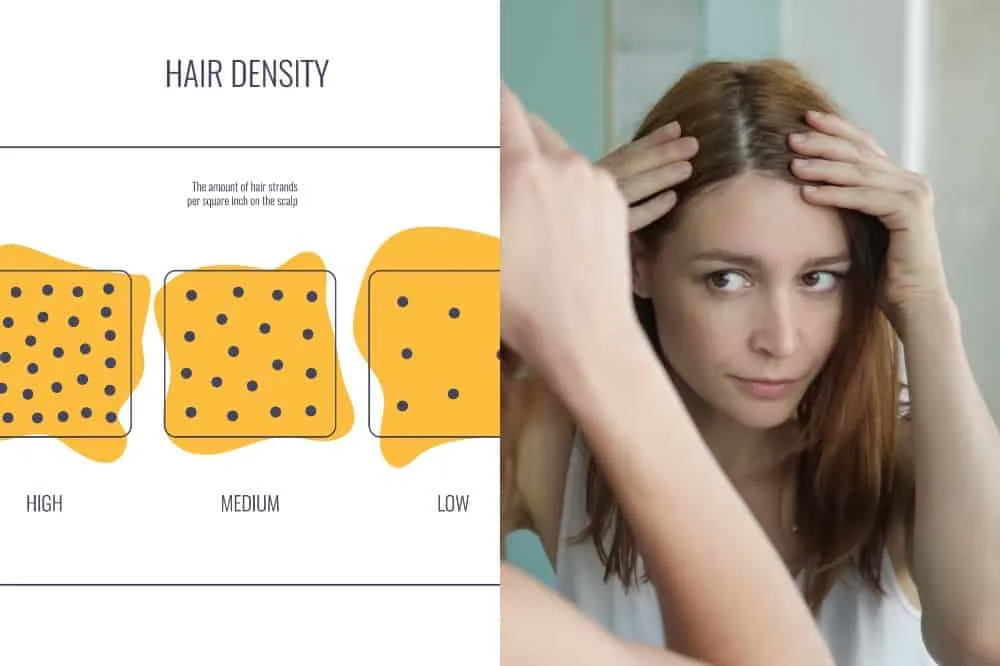
A hair density test can tell you how much hair you have on your scalp. It is done by checking whether your scalp can be seen easily or not from all angles in the mirror.
- If you can’t see the scalp, you have high-density hair.
- If the scalp is slightly visible, it’s medium.
- If you can see it instantly, you have low-density hair.
Scalp Test
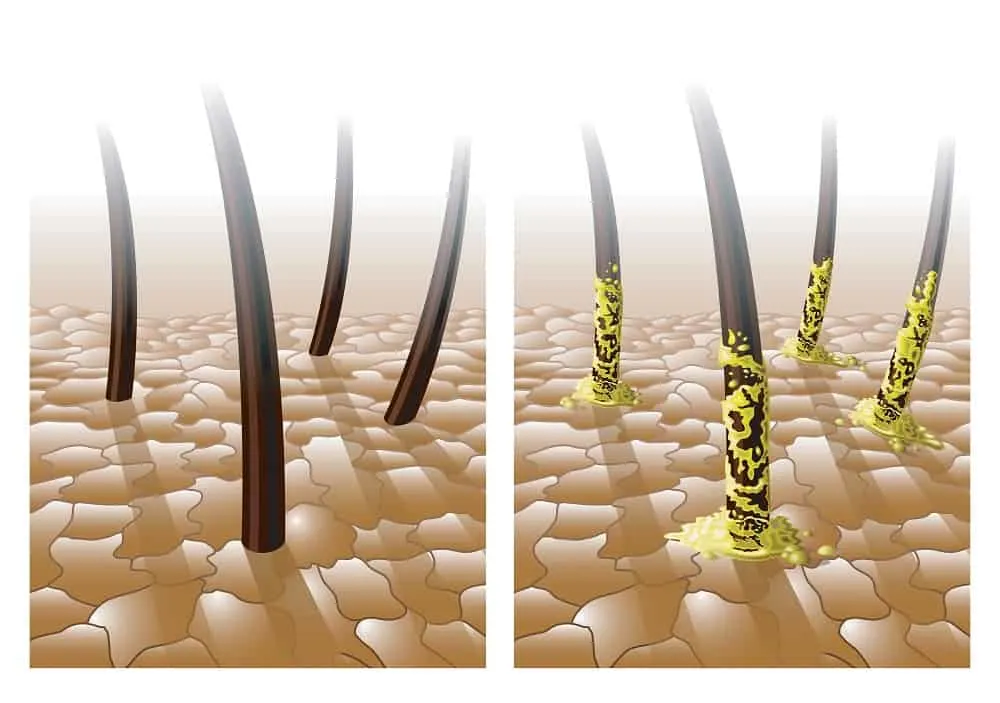
Curious if you have an oily scalp? The process to find out is a bit time-consuming but straightforward. Wash your hair the night before the testing day as you need to have a clean scalp.
In the morning, press a tissue on your scalp.
- If you see oil, then you have oily hair.
- If you don’t see oil, then technically you don’t have an oily scalp, but that doesn’t mean it’s completely void of oil.
Porosity and Elasticity Test
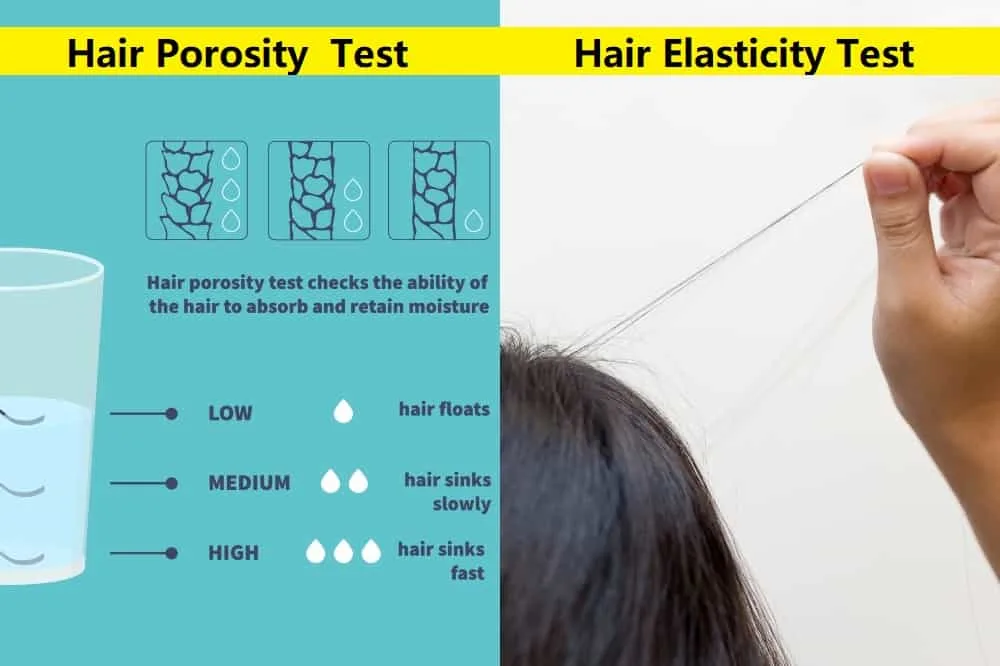
How to Test Hair Porosity
Hair porosity indicates whether the hair cuticle is open or closed. Hair porosity can be tested by their level of water absorption. Take a single strand of your hair and hold it by the root side up. Then, use your thumb and index finger to run up and down through the hair.
- If going up feels resistant, the cuticles are open, and you have highly porous hair.
- If you feel little to no resistance, you have medium and low porosity hair.
How to Test Hair Elasticity
To test your hair’s elasticity, you’ll have to do it on both dry and wet hair, as wet hair is more sensitive. Wet hair is expected to stretch about 40 percent and shrink back. Dry hair is expected to be slightly elastic. Take a hair strand and give it a gentle tug using two fingers. See what happens.
- If it snaps instantly, your hair has low elasticity – bad news!
- If it extends when you pull it and stays like that, you have medium elasticity.
- If the hair stretches and goes back to its original length, then your hair has high elasticity. This means you have good hair condition.
- To be very sure about your hair’s elasticity, you can test hair strands from different areas of the scalp.
Knowing the basics of your hair’s structure can help you take care of it and maintain its health long term. Your hair will happily tell you everything from how often it should be cut and conditioned, to what type of shampoo or hair products to use. You just have to listen!
